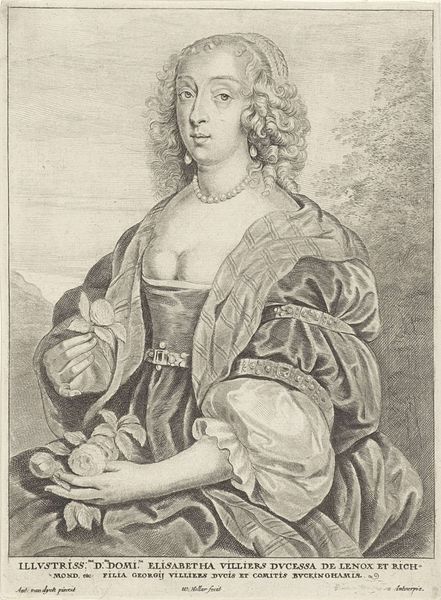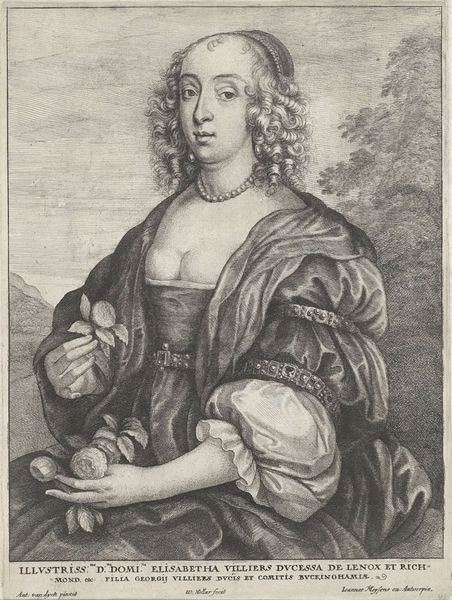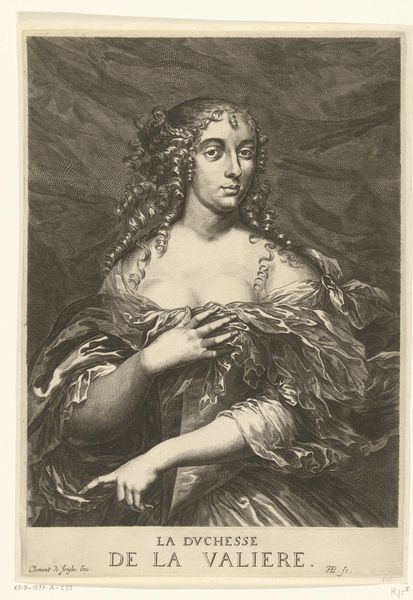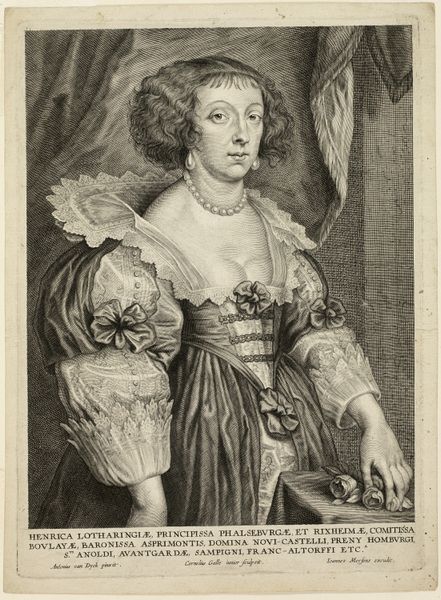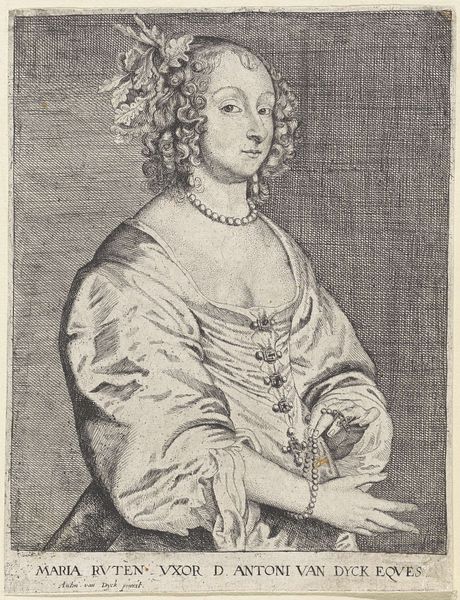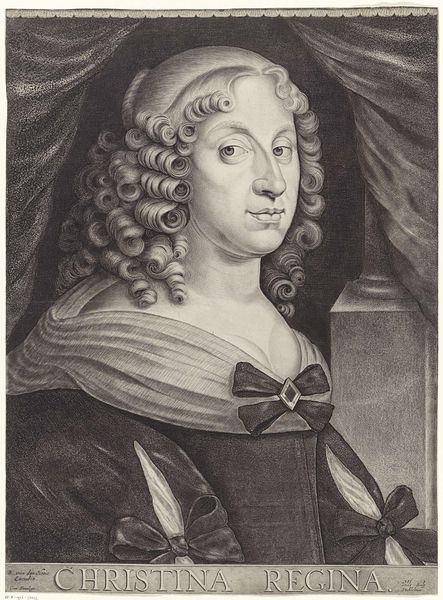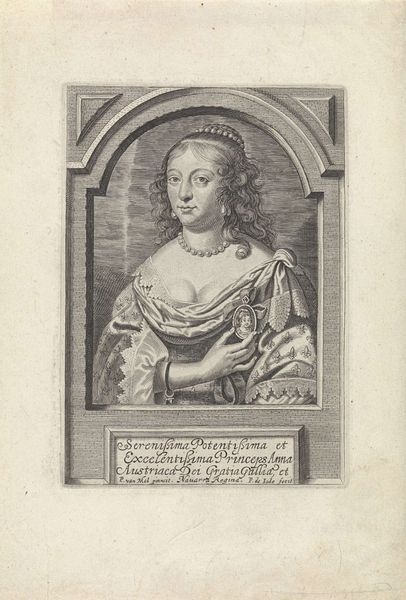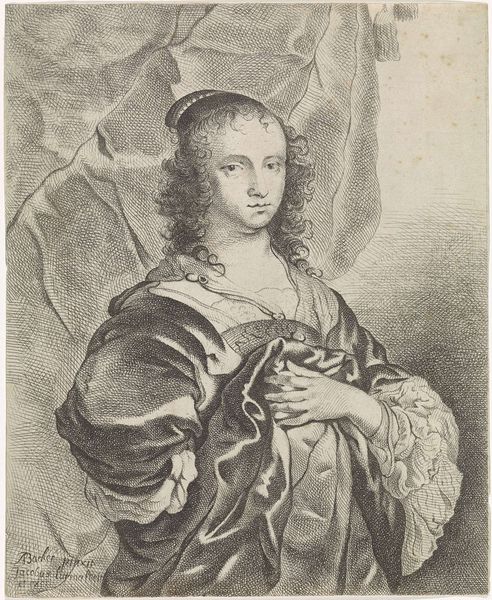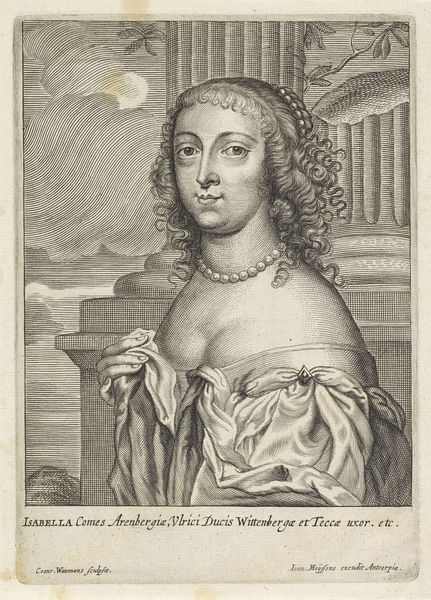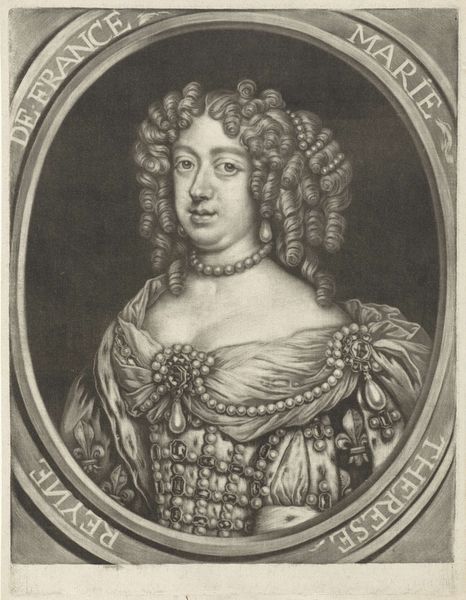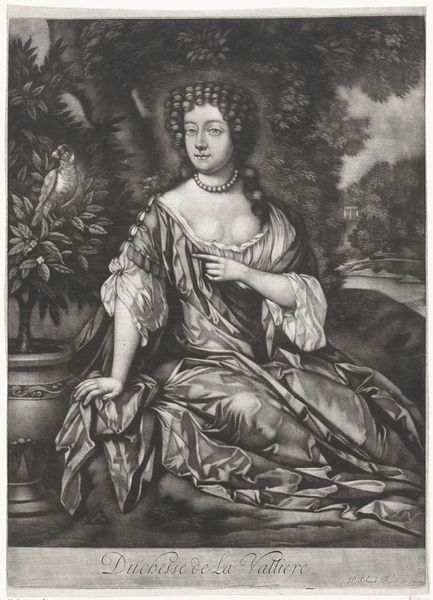
Mary Villiers, Dutchess of Lennox and Richmond 1645 - 1650
0:00
0:00
drawing, print, engraving
#
portrait
#
drawing
#
baroque
# print
#
history-painting
#
engraving
Dimensions: Sheet: 9 7/16 × 7 1/4 in. (24 × 18.4 cm)
Copyright: Public Domain
Editor: This is "Mary Villiers, Dutchess of Lennox and Richmond," an engraving by Wenceslaus Hollar from between 1645 and 1650. There’s something about the way she’s holding those roses… it feels both delicate and very deliberate, almost like a performance. What do you see in this piece? Curator: Absolutely. Considering Hollar created this during a time of great social and political upheaval, her portrayal takes on new meaning. This wasn't simply a portrait; it was a statement. How do you think her elevated social status during such a tumultuous period informs the image we see today? Editor: I guess I hadn't really thought about it in terms of the English Civil War raging at the time. So, her elaborate dress, the roses… are they a form of defiance or an attempt to hold onto power? Curator: It’s both, really. The portrait encapsulates the complexities of power and privilege in the face of revolution. Villiers, a woman navigating a patriarchal society, uses symbols like the roses and luxurious clothing to assert her position but also conform to the expectations of feminine virtue. Do you think Hollar critiques or celebrates that performance? Editor: That’s a great question. I'm not sure I have an answer. The detail in her clothing almost romanticizes her status, but perhaps the knowing gaze hints at something more subversive. Curator: Exactly! The engraving invites us to consider how identity, gender, and power intertwine within specific historical moments. By engaging with the broader socio-political context, we can read beyond the surface of her representation. Editor: So, reading between the lines, we are invited to understand Mary Villiers and also reflect on class, gender, and social structure. I’ll definitely be approaching historical portraiture differently going forward. Curator: And that, perhaps, is the most compelling function of art—challenging the dominant narratives and allowing us to critically examine history.
Comments
No comments
Be the first to comment and join the conversation on the ultimate creative platform.
